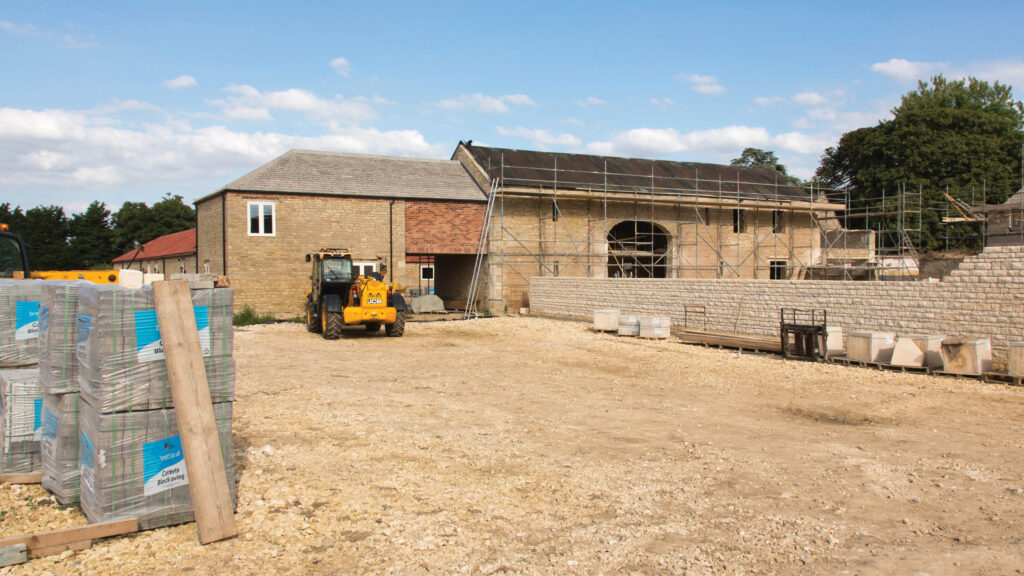What’s new with Class Q permitted development rights?
 © Tim Scrivener
© Tim Scrivener Changes to Class Q permitted development rights (PDRs), which allow farmers to convert agricultural buildings into residential dwellings, have both positive and negative aspects, according to planning experts.
The government has amended the Town and Country Planning Act (General Permitted Development Order 2015) to allow a number of significant changes to these rights.
There have also been amendments to Class R rights and to agricultural PDRs under Part 6 arrangements (see box).
The new rules have been introduced following a consultation in 2023.
They took effect on 21 May 2024, although there are transitional arrangements in place which could be helpful to anyone disadvantaged by the new requirements.
See also: What to check before starting a permitted development project
New cap on floor space
Hannah Moule, founder of The Rural Planning Co, says most of the amendments offer greater flexibility, but there are disappointing elements.
For example, one of the headline changes is that it will be possible to create 10 dwellings with a maximum cumulative floor space of 1,000sq m.
However, the maximum floor space for each house has been capped at 150sq m, which is about the size of a decent three-bedroom property.
Previously, the number of dwellings was limited to five, with a cumulative floor space of 865sq m.
However, it was also possible to develop up to three dwellings with a cumulative floor space of 465sq m, enabling larger properties to be created.
“The overall increase in total floor space is a positive, but I am disappointed by the 150sq m limit as it restricts farmers’ flexibility and options,” says Hannah.
“Dividing a big steel-framed shed into effectively a row of terraces is not always suitable, particularly in a rural location.
“We also submit applications for quite a lot of houses that are bigger than 150sq m for clients who want it for their own home.”
There is a year-long transition period.
“For the next year [until 20 May 2025], farmers can apply for Class Q under the old rules or new rules,” Hannah says.
“So, if you’ve got a building and think you want to get a dwelling of more than 150sq m, do it sooner, rather than later.”
A caveat applies from 21 May 2024. Even if applying under the old rules, property owners will need to demonstrate that they meet a new requirement that the building has “existing suitable access to a public highway”. Previously, the language on highways access was less definitive.
External changes
An ongoing frustration with Class Qs has been that it has not been possible to change the external dimensions of the building, which has tended to prevent the installation of cladding, flues and even windowsills.
However, the government has said it is now possible to increase the external dimensions by up to 20cm, which could help to deliver better-designed homes.
Single-storey extensions of up to 4sq m beyond the rear wall of the existing building will also be allowed.
Which side is the rear may not be immediately apparent with a steel-framed building, and being able to put an extension on the long side, rather than the short side, could be beneficial, say Hannah.
However, the extension needs to be included in the maximum 150sq m individual dwelling floor space. Extensions can also only be built on a hard surface that was in place on or before 23 July 2023.
Building eligibility
Another key amendment is a relaxation of the requirement that the agricultural building to be converted must be part of an established agricultural unit.
This opens the door for the conversion of isolated buildings that are no longer part of the main farming operation, as long as the previous use was agricultural and they have not had an “in-between” use.
In some instances, the clock has also been reset on what may be eligible for Class Q, says Hannah.
Under the old rules, the building must have been erected before March 2013 or 10 years before the date of application.
Now, if a building was constructed under full planning permission prior to 24 July 2023, it will be eligible. “This is quite a surprise and brings into scope a range of new buildings,” she says.
However, the 10-year rule will still apply for holdings with buildings constructed under Part 6 agricultural PDRs.
Buildings that are on agricultural holdings but have been put to non-agricultural uses may also now be eligible.
“We will have to see how this plays out, because it is not completely clear how it will be interpreted,” Hannah says.
“But it may help to avoid issues where people have had applications refused because they had, say, a car in the shed or an old sofa, which is seen as domestic rather than agricultural use.”
A suggestion in the consultation that equestrian and forestry buildings should also be eligible for Class Q has not been taken forward.
The government has also decided against extending Class Q rights to protected landscape designations such as areas of outstanding natural beauty and national parks.
Other changes to PDRs
The other key changes to the amended General Permitted Development Order are:
Class R PDRs allow for the change of use of agricultural buildings to flexible commercial use.
The definition has been widened to include sport and recreational uses and the maximum floor space has been increased from 500sq m to 1,000sq m.
Part 6 agricultural development PDRs allow farmers to erect new farm buildings with a 28-day notice period.
There has been an increase in the maximum floor area for Class A under Part 6 from 1,000sq m to 1,500sq m.
However, if Part 6 rights are used to erect a new building, it will prevent the use of Class Q rights on the holding for 10 years (and vice versa).
Anyone thinking they might want to use Class Q in the short to medium term is therefore advised to apply for full planning permission for a new farm building to keep that option open.
Beating the postcode lottery
The process for applying to use Class Q PDRs involves submitting a prior approval notification to the local authority, which should respond within 56 days.
However, securing prior approval can be a postcode lottery, warns Hannah Moule.
Government planning data show the approval rate for Class Q across England was 64% in 2022 and 66% in 2023, with significant variations between local authorities.
Taking central Worcestershire as a regional example, the 33% approvals rate by Malvern Hills local authority is half the national average, in contrast with Wychavon, in the same county, where 85% of applications have been accepted.
While some of the criteria on which applications are judged have a simple yes or no answer, others are more subjective, says Hannah.
“Councils are deciding subjectively on these cases and in some instances with completely different outcomes,” she says.

© Tim Scrivener
To give applications the best chance in local authority areas where the success rate is lower, she recommends seeking professional advice early to develop the right strategy.
It is also important to carefully address the criteria where farmers are most likely to run into problems.
“With some local authorities you have to go in with bells and whistles and spend the money to gather the information, otherwise they are just going to refuse it,” Hannah says.
For example, she estimates that a huge proportion of appeals relates to arguments about the level of “building operations reasonably necessary” for the building to function as a dwelling.
The government guidance sets out that the building must be capable of being converted, so applicants must demonstrate robustly to the local authority that the building is being converted and not rebuilt.
This means it must be shown that the existing building is structurally sound and there are enough existing materials in the walls, frame and roof to allow it to become a dwelling without significant elements of rebuilding.
“We provide a conversion method statement, which details how each element of the building will be converted and present the application so it is obvious to someone who may not understand building construction techniques,” Hannah says.
A building survey will be required to feed into this statement, from a surveyor who understands the end goal so their report supports, rather than undermines, the application.
The theory is that Class Q, being permitted development, should involve less time and effort, but that often doesn’t feel the case.
“It feels very much feel like a planning application and it costs as much too,” she says.
The critical difference is that it is possible to get some sheds through on Class Q that would be rejected under a full planning application, as they wouldn’t be supported under planning policy.
Once the principle of development has been established using Class Q, it is also possible to go back to a local authority and ask for design changes, which might include asking to rebuild rather than convert.
Class Q rights are therefore a route to add significantly to the value of a building, which if sold can release capital for reinvestment elsewhere or to help with succession planning.
“It is a very valuable tool if you can get it right,” says Hannah.
Tips for securing Class Q
- Research previous applications in your local authority area to see how they approached Class Qs
- Before applying, carry out internal repairs that are needed to ensure the building is structurally sound
- Make sure the site has highways access before making your application – if necessary, do a planning application to achieve this
- Consider how your building presents itself to a fresh pair of eyes, including what is stored in it.
